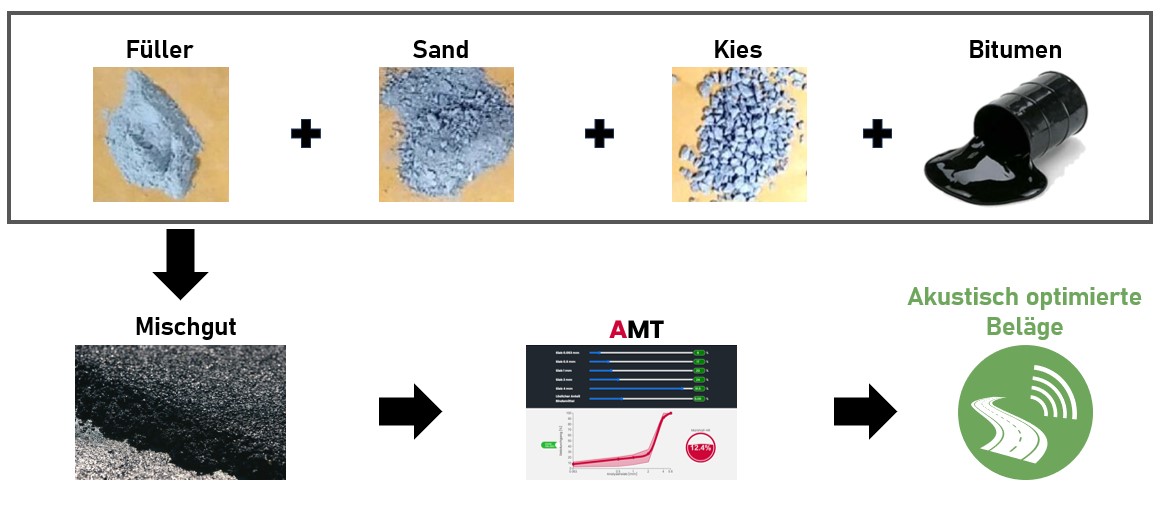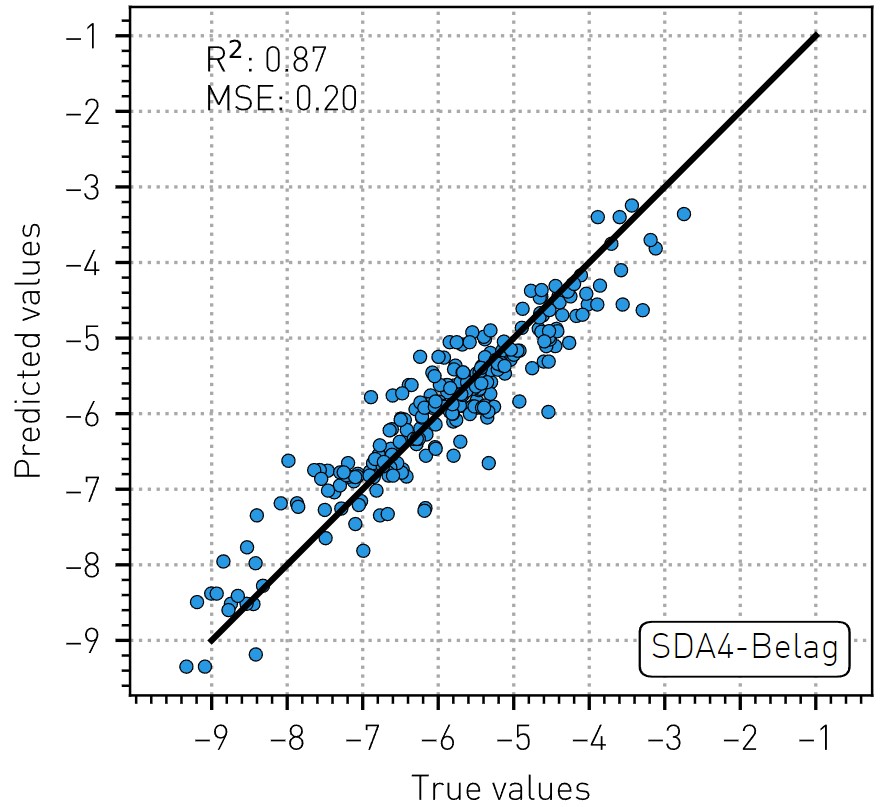--> https://acoustic-mixture-testing.gundp.ch/ <--
(only in german)

The tool can be used to determine the expected acoustic effect of SDA4 pavements with just a few clicks. The tool is particularly suitable for:
- Noise control authorities: Ensure that the low-noise pavements ordered are actually low-noise.
- Civil Engineering Offices: Determine the exact specifications of low-noise pavements.
- Mixture plants: Checking the pavement formulation and optimizing it according to the plant's own capabilities.
With the tool, expensive test installations can thus be dispensed with and the acoustic effect can be determined based on the algorithm. A calculation of the expected void content is also presented within the tool.
How does the tool work and how do I get access?
The tool is implemented as a web tool on the site https://acoustic-mixture-testing.gundp.ch/. Access to the model can be obtained by registering a user. After that, one can test his rubbers with the model. If required, a report of the tested rubber can be generated and downloaded. als Webtool umgesetzt.
Modeling the acoustics of the road surface
The basic ingredient of a pavement is a grain structure. This aggregate mixture is mixed with a bituminous binder and heated. The asphalt can then be applied to the road and compacted (rolled). For low-noise pavements in particular, the composition of the mixture is extremely crucial.
For more than ten years, low-noise pavements have been used intensively in Switzerland. The acoustic effect can be measured and checked using the CPX method. By digitizing the paving records of more than 100 different pavements and about 850 measurement points, an AI model was trained to predict the acoustic effect of a pavement mixture.
Validation of the model
The model was validated with a portion of the data set (20% of the data points) to test the predictive power of the model. The validation showed that the model has a very good predictive performance. This is because the agreement between the measured and the modeled points is very high. This is true from the best values (-9 dB) to the worst values (-3.5 dB). This also shows the importance of optimizing the mix. This is because the range of acoustic performance in a pavement installation can be large.

/www.gundp.ch/file/2191/1_Mischgut_Werk.png)
/www.gundp.ch/file/2190/2_Mischgut-Einbau.png)
/www.gundp.ch/file/2188/3_Mischgut_Walzen.png)
/www.gundp.ch/file/2189/4_Mischgut_Detailaufnahme.png)
/www.gundp.ch/file/2674/Blog%20und%20LinkedIn.png)
/www.gundp.ch/file/2741/Blog_acoustic-assessment-of-pv-systems-on-motorways.png)
/www.gundp.ch/file/2967/analyse-road-conditions-with-your-smartphone.png)